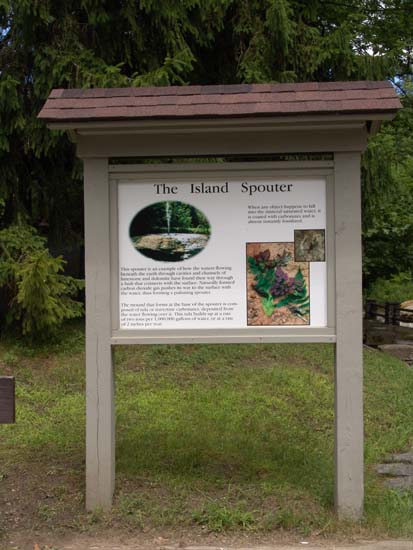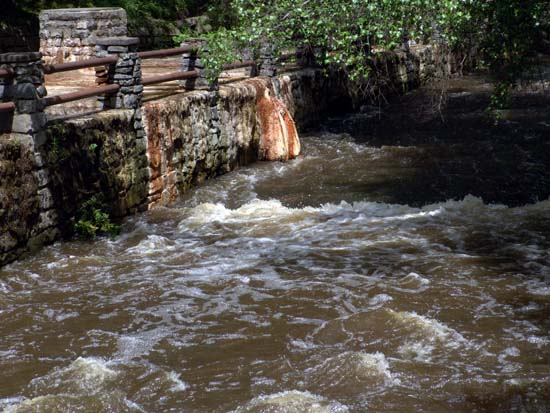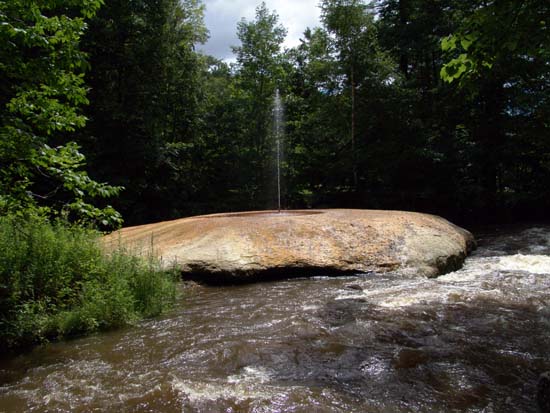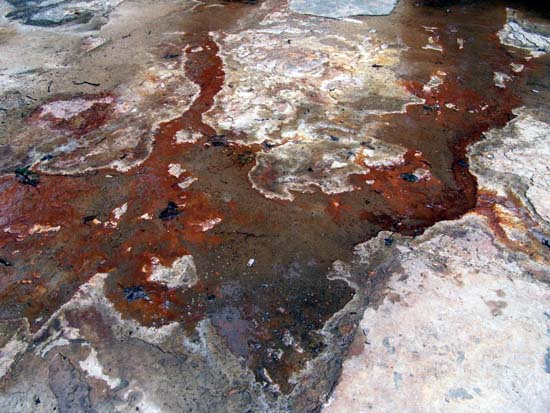Apr 13, 2025
Apr 13, 2025
 On way to Lake George, we visited Saratoga Springs.
On way to Lake George, we visited Saratoga Springs.
Saratoga Springs is located in the foothills of New York State's Adirondack Mountains (about 20 miles north of Albany on RT 87). The area was a hunting ground of the Iroquois Indians, who called it Sarachtogue-- "hillside of a great river" or "place of the swift water." The Iroquois attributed the fine fur on the animals they trapped to the saline content of the water. They also considered the water to have medicinal properties.
The springs in Saratoga arise from complex geological phenomena. The limestone layers of a basin between Lake George and Albany trap ancient seawater, but the solid layer of shale that seals in the waters is fractured along the Saratoga fault, which outcrops within the town and environs of Saratoga Springs.


The spouter is an example of how the waters flowing beneath the earth through cavities and channels of limestone and dolomite have found their way through a fault that connects with the surface. Naturally formed carbon dioxide gas pushes its way to the surface with the water, thus forming a pulsating spouter.
The mound that forms at the base of the spouter is composed of tufa or travertine carbonates, deposited from the water flowing over it. This tufa builds up at a rate of two tons per 1,000,000 gallons of water, or at a rate of 2 inches per year.
 When any object happens to fall into the mineral saturated water, it is coated with carbonates and is instantly fossilized.
When any object happens to fall into the mineral saturated water, it is coated with carbonates and is instantly fossilized.
As the water escapes to the surface, it dissolves the overlying limestone layers, contributing to the unique content of the springs. The springs of Saratoga are some of the few naturally carbonated springs found in the United States.
The Island Spouter is a "geyser" built up by an island of carbonate deposits in the middle of a stream.

This image shows carbonate deposits on the rocks surrounding the geyser popularly known as "The Island spouter".
In the town of Saratoga Springs, additional springs can be found. A hundred years ago, these springs were advertised for their potential for healing skin disorders, curing the effects of "abdominal plethora" and relieving indigestion. Today, they are one of the many interesting attractions of the region.
Now on to Lake George
02-Jul-2005
More by : Rajender Krishan